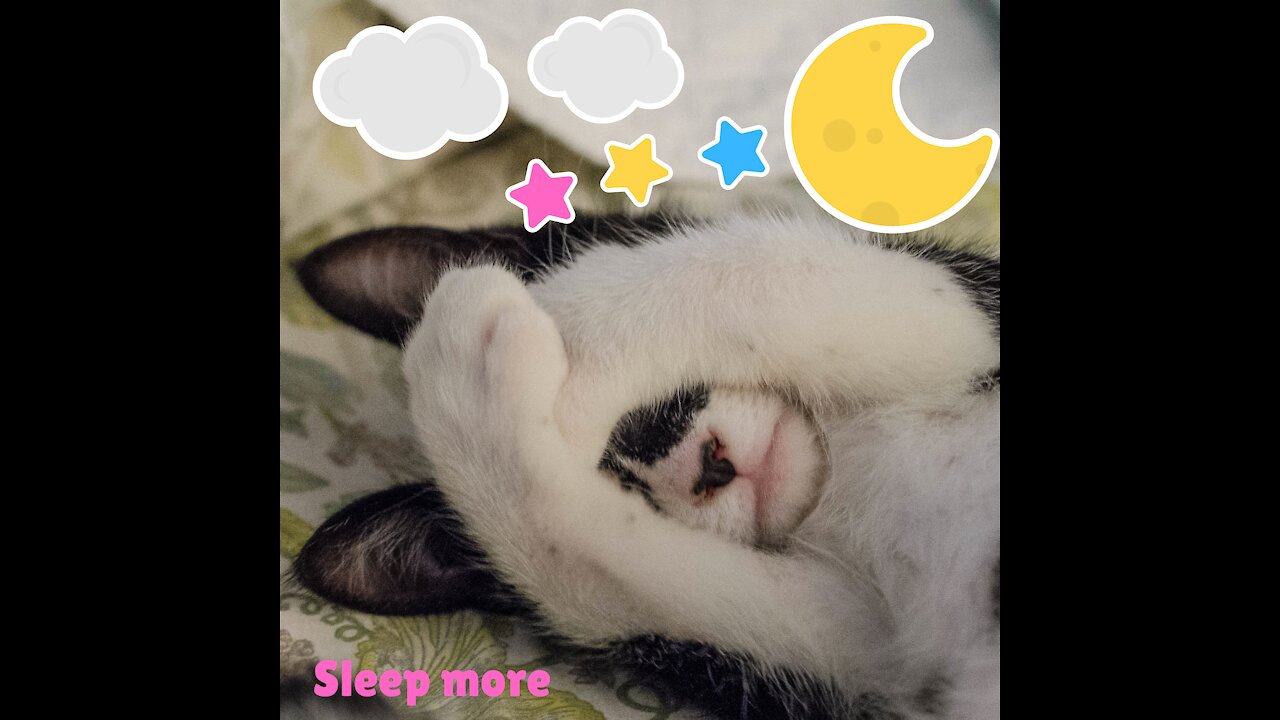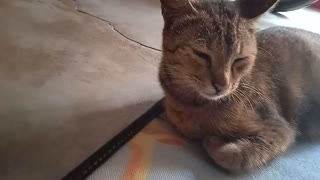Premium Only Content

Cat sleeping 😸.
If you have a cat, you may have noticed that they appear to spend a lot of the day sleeping. Your cat may also be more lively in the early morning or evening hours, perhaps even waking you from your sleep.
Even though your cat's sleep behaviors might seem unusual compared to yours, they could be completely normal for a cat. Learn more about natural cat sleeping patterns to better understand your cat, recognize when your cat is feeling less than their best, and know when it is time to call your veterinarian.
How Many Hours a Day Do Cats Sleep?
More than half of cats sleep between 12 and 18 hours a day1, and nearly 40% of cats sleep more than 18 hours per day. As they grow older, a majority of cats sleep for more hours each day than they did in their younger years.
How Long Do Cats Sleep?
Cats have a polyphasic sleep pattern2, which means they sleep multiple times each day rather than in one, long period, like humans generally sleep. These cat naps average 78 minutes in length. However, cats commonly sleep for periods of time ranging from 50 to 113 minutes3.
The Sleep Cycle for Cats
Like humans, cats have a circadian rhythm4. The circadian rhythm is the internal biological clock5 that guides the 24-hour sleep-wake schedule.
In humans, the sleep cycle is diurnal, meaning we are naturally prone to stay awake during the day and fall asleep at night. Cats, however, are crepuscular6. They experience two peaks of activity, one in the early morning before sunrise and one in the evening around sunset.
Researchers hypothesize that a cat's crepuscular sleep cycle is driven by their predatory natures. Common prey animals for cats have different sleep cycles. A cat's crepuscular nature allows it to be awake at daybreak to prey on diurnal birds, and at twilight to prey on nocturnal rodents.
What Happens While Cats Sleep?
Similar to humans, cats cycle through different stages of sleep. Cats experience both non-rapid eye movement (NREM) and rapid eye movement (REM) sleep7.
Research shows that cats often experience a period of alertness and activity8 before becoming drowsy and then falling into NREM sleep. During this NREM stage, your cat may be lightly asleep and ready to awake at a moment’s notice. After NREM sleep, the cat may become alert again and cycle through alertness, drowsiness, and NREM sleep a few times.
Ultimately in the cycle, cats transition from NREM to REM sleep. During REM sleep, the eyes move behind closed eyelids. In cats, the eyes can move both horizontally and vertically. You have probably seen your cat experience REM sleep. When cats are in REM sleep, they can twitch or go limp with a loss of muscle tone.
Also, during REM sleep, cats may dream9. In humans, dreams most frequently occur during REM sleep10. The eye movements made during REM may be linked to dreaming. Researchers have observed cats appearing to act out their dreams while in REM sleep.
-
 0:07
0:07
Rizky12
2 years agoCat sleeping
65 -
 17:06
17:06
Professor Nez
10 hours ago🚨BREAKING: Elon Musk to BUY MSNBC!? Dems STUNNED by Brian Williams’ Viral Video!
52.2K67 -
![If You Smell LALALALA What CHiLi IS COOKING!!... #RUMBLETAKEOVER [Overwatch 2]](https://1a-1791.com/video/s8/1/e/s/X/3/esX3u.0kob-small-If-You-Smell-LALALALA-What-.jpg) 4:27:40
4:27:40
CHiLi XDD
12 hours agoIf You Smell LALALALA What CHiLi IS COOKING!!... #RUMBLETAKEOVER [Overwatch 2]
34.5K1 -
 12:00:03
12:00:03
Delnorin Games
13 hours ago🔴 Live - Star Citizen
83.6K15 -
 1:39:44
1:39:44
HELMET FIRE
14 hours agoDEADROP IS BACK!
151K10 -
 10:03
10:03
Tundra Tactical
16 hours ago $15.76 earnedBrandon Herrera Vies Bid for ATF Director!
97.2K17 -
 22:01
22:01
DeVory Darkins
1 day ago $37.55 earnedHakeem Jeffries SHUTS DOWN The View as Matt Gaetz Speaks out
85.6K142 -
 2:02:54
2:02:54
Mally_Mouse
15 hours agoLet's Play!! - Spicy Saturday
64.3K2 -
 1:33:06
1:33:06
Slightly Offensive
16 hours ago $33.07 earnedAre You Ready for What's Coming Next? | Just Chatting Chill Stream
80.6K42 -
 32:10
32:10
MYLUNCHBREAK CHANNEL PAGE
1 day agoThe Gate of All Nations
151K68